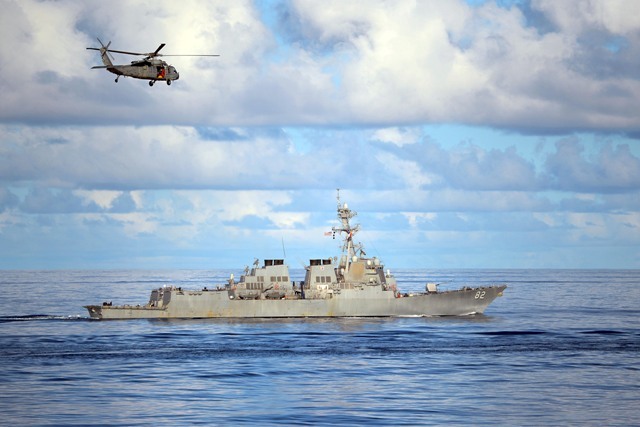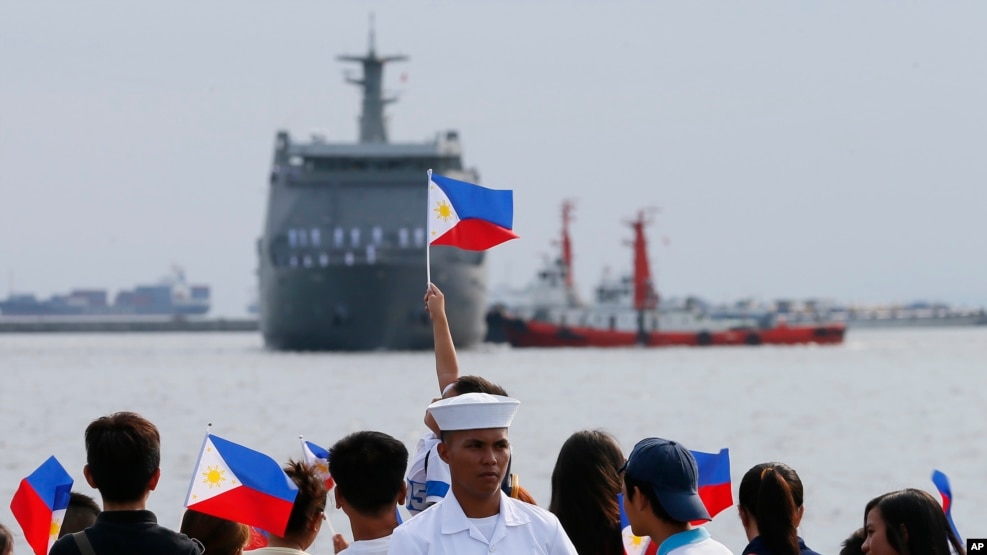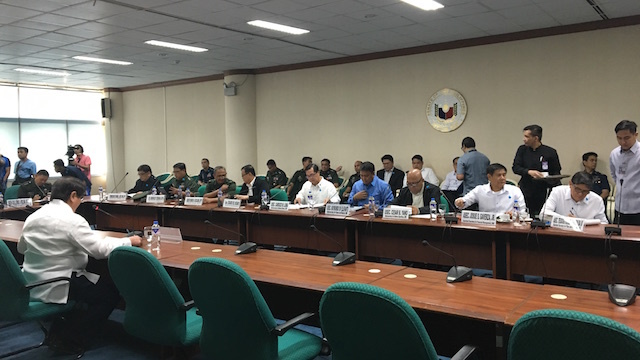From the Euraisa Review (Dec 15):
Mitigating Maritime Violence In Sulu Sea: Regional Cooperation Needed – Analysis (By BA Hamzah)
Suggestions that kidnappers/extortionists make money from ransom do not explain the root causes of maritime violence in the Sulu Sea. The main solution lies in development of the impoverished region in Mindanao and granting the Muslims self-rule in their homeland, coupled with regional cooperation to enforce law and order at sea.
The recent spate of kidnappings in the Sulu Sea seems to suggest that the sea is now under the control of the notorious bandits-cum-criminals and extortionists with their main sanctuaries/hideouts in southern Philippines. Their modus operandi is very simple. They extort money from families of captives or from their respective governments. It does not matter who pays the ransom so long as the right amount is paid. Very often, if the right amount of ransom is not raised in good time they would decapitate the captives as has happened to John Ridsdel and Robert Hall, both Canadians, in April and June 2016, respectively.
Kjartan Sekkingstad, a Norwegian hostage escaped death after a ransom was paid, reportedly around 100 million pesos. He became a “celebrity” overnight after his audience with President Duterte on 18 September 2016. Exactly a year before, the same group that abducted Sekkingstad and the two Canadians, killed Mr Bernard Then, a Malaysian engineer hostage, allegedly when it did not receive its share of the bounty.
Not Likely the Last
In September 2016, 13 Indonesians were kidnapped at sea; six were later released apparently without any ransom. This is the third time that Indonesians were kidnapped this year. In response to the spate of kidnappings, Jakarta has imposed a moratorium on the shipment of coal to the Philippines. The fate of the remaining seven is not known. They are probably held as captives in nearby Islands or on the mainland, waiting for ransom to be paid before they are released. Or, when the right amount cannot be raised in time, their heads will roll.
In an earlier incident (April 2016) four Malaysians were kidnapped and released after two months in captivity. A ransom of RM30 million (US$7.2 million) was reportedly raised for brothers Wong Teck Kang and Wong Teck Chii, their cousins, Johnny Lau Jung Hien and Wong Hung Sing.
Just last week, on 8 December 2016, there was a shootout between a group of armed extortionists, probably members of the outlawed Abu Sayyaf, and the members of the Tiger Platoon, the Royal Malaysian Police. In this incident off Lahad Datu, a coastal town in Sabah, Malaysia the Police claimed they killed the mastermind of several kidnappings of several foreigners from Sabah. Two other extortionists were killed and arrested two others.
The Police claimed the group was responsible for the kidnapping of four Indonesian crewmen in April 2016, as well as the beheading of the Canadians. Going by what happened in the past, this incident will not be the last. Vengeance and retribution in a tribal society that roams the Sulu Sea will be swift, for which the security forces must stay alert. No one knows how many are waiting to be freed and how much more ransom will be paid to the bandits, kidnappers and extortionists; and, by whom. Only time will tell.
Legacy of Lawlessness
According to one authority on Southeast Asian waters, James Warren, lawlessness in the Sulu Sea and the Celebes Sea is not new. It has existed as long as one could remember dating back to 1521, when the Spaniards colonised and christianised the Philippines. The local Muslims and natives waged a war of insurrection against the colonisers and in the Sulu Zone for occupying their lands as well interfering with their way of life.
Even before the Spaniards took control of the Philippines, the local chieftains in the South Philippines were reportedly trading in slaves. Human trafficking, people smuggling, piracy, sea robberies, and kidnappings were quite common in those days among the Sulu Sea community.
Most of the current problems associated with violence in the Sulu Sea could be traced to domestic politics in the Philippines, especially in Mindanao. The failure of the Manila-based government to give the Muslims (Moros) in South Philippines a real stake in national politics and economy have turned many impoverished to take the law into their hands. Some become bandits, kidnappers, extortionists, gun runners and many other jobless Moros engage in other forms of criminal activities for a living at sea, where enforcement is weak or in certain parts of the Sulu Sea, non-existent.
The most recent attempt to give the Moros an autonomous rule collapsed in June 2016, just before President Duterte took over the government. Since then President Duterte has launched a new initiative. He is now talking to Muslim leaders in Mindanao, most notably Nur Misuari, the former head of the Moro National Liberation Front (MNLF) who was disgraced by the previous three presidents.
The challenge to President Duterte is regaining the trust of the Moros who have been betrayed not once or twice but numerous times in their struggles for self-rule.
Way Forward
The suggestions that kidnappers/extortionists make money from ransom do not explain the root causes, which include granting the Muslims self-rule in their homeland and bringing development into Mindanao. Without this, the armed struggles will continue and the spill-over will be felt at sea. The overlapping territorial claims between Philippines, Indonesia and Malaysia makes effective administration of the Sulu Sea more challenging.
In August 2016, Indonesia, Malaysia and the Philippines signed a document on standard operating procedures (SOP) for trilateral maritime cooperation, marking the official start of coordinated joint sea patrols in the Sulu Sea.
There is no need to reinvent the wheel. The example of the coordinated maritime and air operations in the Strait of Malacca could be a useful start. The MOU on avoiding incidents at sea that existed between the Royal Malaysian Navy and the Indonesian Navy inked in 2001 could also be used. The principles of unity of command and intelligence /information sharing adopted by the multinational Combined Task Force 151 in dealing with piracy menace in the Gulf of Eden and Somalia in 2009 are worth revisiting.
Regional cooperation in the Sulu Sea could benefit from the current Brunei-Indonesia- Malaysia-Philippines-East ASEAN Growth Area (BIMP-EAGA) framework signed in 1994 to promote commerce and trade between the three territories in Borneo.
Bringing development to the Moros in the South Philippines, just like the overlapping territorial claims in the Sulu Sea, cannot be resolved overnight. Ensuring order and peace in the Sulu Sea becomes a burning and pressing matter. The maritime enforcement agencies in the three countries responsible for the Sulu Sea must now implement the political decision as a matter of urgency.
[BA Hamzah is a lecturer at the Department of Strategic Studies, National Defence University of Malaysia, Kuala Lumpur. He contributed this to RSIS Commentary.]
http://www.eurasiareview.com/15122016-mitigating-maritime-violence-in-sulu-sea-regional-cooperation-needed-analysis/











